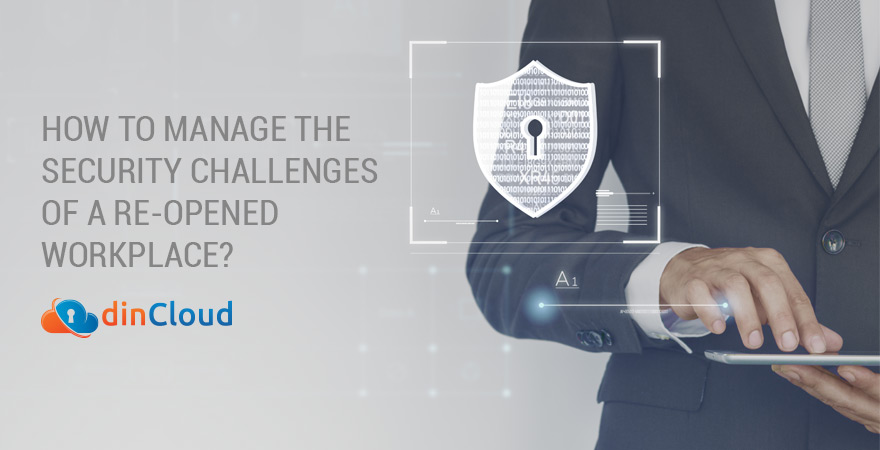During the past months, the workplace has seen massive changes. On very short notices, the entire workforce of companies was forced into remote work for an indefinite period of time. Now, we are entering yet another crucial phase of this global crisis.

With mass scale vaccinations taking place across the globe, we are seeing a gradual easing of the restrictions that were imposed due to the pandemic. As a result, workplaces have also started re-opening, giving rise to a host of data and network security challenges.
A Hybrid Workforce – The Way Forward
Most enterprises are approaching this re-opening phase with a lot of caution. IT managers were barely finished with the herculean task of remote work, yet they have another challenge in the making, which is the re-opening of workplaces at a very fast pace.
Related: The Steps You Can Take to Secure Remote Work Environments
Under the hybrid workforce model, some employees will be re-called to the workplace, while others will continue to Work from Home (WFH). This return to the workplace will be in cycles in most cases, in which teams will be re-called on a periodic basis.
Devices Re-Connecting to the Corporate Network
In the entire Work from Home (WFH) era, whether employees used their official or personal devices, these devices will now be re-connecting to the secure corporate networks. To make things even more challenging, this will be an ongoing process.
During this whole time, these devices have been away from the safety and security associated with closed corporate networks. In this interim period, these devices have been running over generally insecure home or public networks.
Related: 17 Best Practices to Attain Secure Remote Work Environments
In all this time, most of these devices have collected “cyber toxins”, which could be in the form of malware, ransomware, viruses or more. So far, most of these toxins have been in hibernation, waiting for the opportune moment to strike.
Well, that opportune moment has arrived, as these devices will be re-connecting to secure corporate networks. This means that if any compromised employee device makes a full connection with the corporate network, things can get really bad very quickly.
So, this is the foremost, and perhaps the biggest challenge that IT teams will be faced with. How to cleanse the employee devices that are re-connecting to the office network from dangerous stuff like malware, ransomware, viruses and much more?
Therefore, IT security teams will have to conduct an in-depth analysis and audit of employee endpoint devices to ensure they are “clean”. This will have to be done before these devices make their way back to the office network.
Related: 6 Ways to Balance Remote Productivity and Security
User and Device Authentication
This is the next, and yet another critical element of making a secure return to the workplace. Access to the corporate network should only be granted after successful verification of the end user, and the endpoint device that the end user has.
If you have a reliable Cloud Service Provider (CSP) like dinCloud, in place of the on-premise resources, then you will need to authenticate only the end user, as no data is stored over the individual endpoint devices of the employees.
dinCloud also uses a robust Two Factor Authentication (2FA) mechanism to ascertain the identity of each end user. This 2FA solution is based on both static and dynamic parameters, making it nearly impossible to gain un-authorized access.
Managing Scarce IT Resources
This whole exercise will take a toll on your IT team, as they will have to face multiple scenarios all at once. Not only will the devices reconnecting to the network need a security check and overhaul, rather this will turn out to be an ongoing activity.
This involves a lot of burden on already stressed out IT teams. In this testing scenario, IT teams would welcome a lending hand from their colleagues in the form of full compliance with the organization’s protocols for cyber and data security.
Conclusion
This re-opening of the workplaces is another crucial phase in the realm of cyber security. Enterprises need to make sure that the employee devices re-connecting to the enterprise network are safe from malware, ransomware, viruses and other malicious content.
Contact dinCloud for a wide range of cloud solutions, which come with robust and multi-layered security that is built into the very service.


